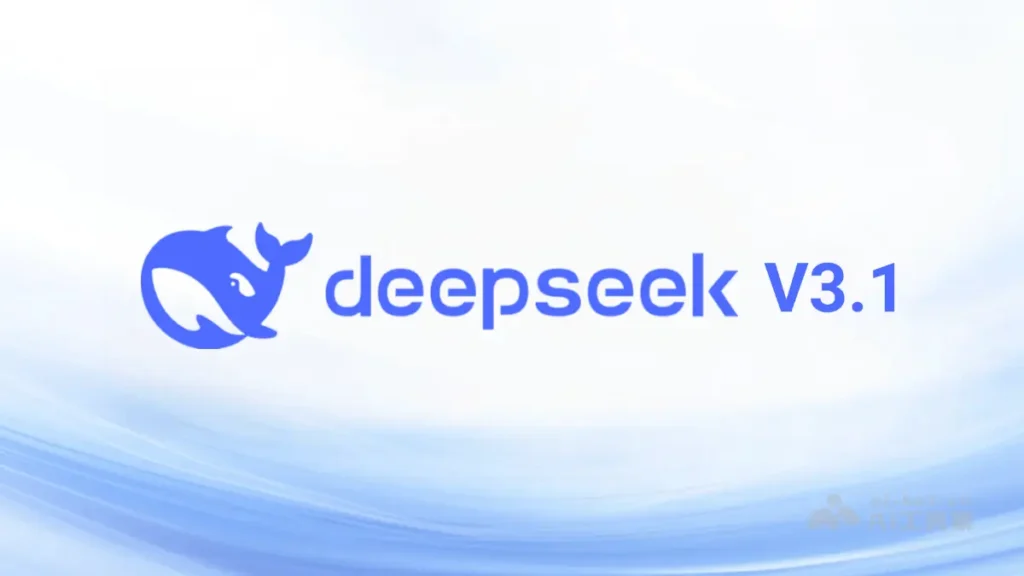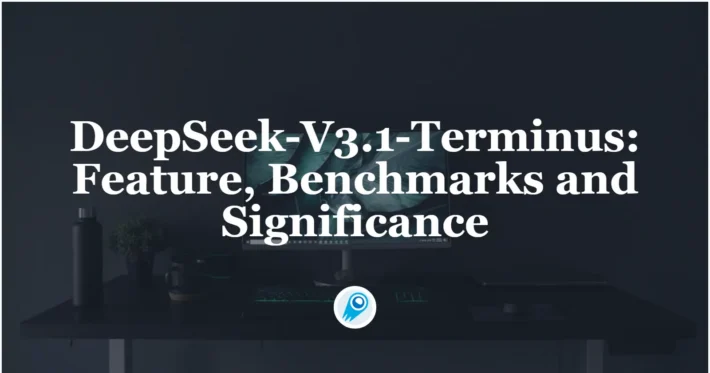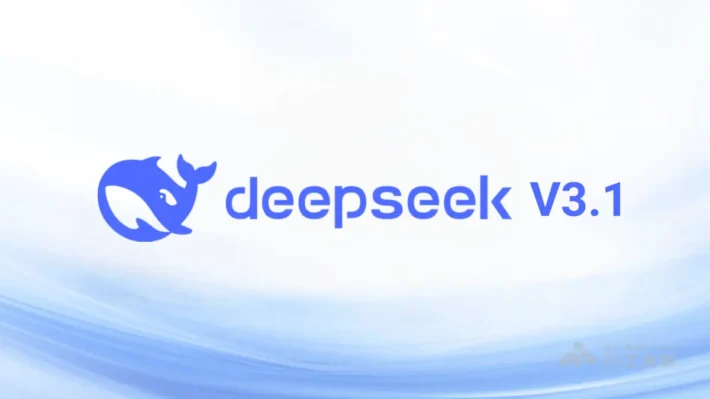DeepSeek-V3.1: Feature,architecture and benchmarks

On August 2025, Chinese AI startup DeepSeek announced the release of DeepSeek-V3.1, a mid-generation upgrade the company bills as its first step “toward the agent era.” The update brings a hybrid inference mode (a single model that can run in a “thinking” or “non-thinking” mode), a substantially longer context window, and targeted post-training improvements to tool calling and multi-step agent behaviour.
What is DeepSeek-V3.1 and why does it matter?
DeepSeek-V3.1 is the latest production-grade update to DeepSeek’s V3 series. At a high level it is a hybrid MoE language model family (the V3 lineage) that DeepSeek has post-trained and extended to support two user-visible operating modes,You’ll find two main variants: DeepSeek-V3.1-Base and the full DeepSeek-V3.1:
- Non-thinking (deepseek-chat): a standard chat completion mode optimized for speed and conversational use.
- Thinking (deepseek-reasoner): an agentic reasoning mode that prioritizes structured, multi-step reasoning and tool/agent orchestration.
The release focuses on three visible improvements: a hybrid inference pipeline that balances latency and capability, smarter tool-calling/agent orchestration, and a substantially extended context window (advertised as 128K tokens).
Why it matters: DeepSeek-V3.1 continues the broader industry trend of combining efficient large-scale MoE architectures with tooling primitives and very long context windows. That combination is important for enterprise agents, search-plus-reasoning workflows, long-document summarization and tool-driven automation, where both throughput and the ability to “call out” to external tools deterministically are needed.
What makes DeepSeek-V3.1 different from previous DeepSeek releases?
Hybrid inference: one model, two operational modes
The headline architectural change is hybrid inference. DeepSeek describes V3.1 as supporting both a “think” mode and a “non-think” mode inside the same model instance, selectable by changing the chat template or a UI toggle (DeepSeek’s “DeepThink” button). In practice this means the model can be instructed to produce internal reasoning traces (useful for chain-of-thought style agent workflows) or to respond directly without exposing intermediate reasoning tokens — depending on developer needs. DeepSeek presents this as a path toward more agentic workflows while letting applications choose latency/verbosity trade-offs.
Larger context window and token primitives
Official release notes report a much larger context window in V3.1; community testing and company posts put the extended context at 128k tokens for some hosted variants, enabling substantially longer conversations, multi-document reasoning, or long code bases to be fed into a single session. Complementing that, DeepSeek reportedly introduces a few special control tokens (for example <|search_begin|>/<|search_end|>, <think> / </think>) intended to structure tool calls and delineate “thinking” segments internally — a design pattern that simplifies coordination with external tools.
Sharpened agent/tool abilities and latency improvements
DeepSeek states that V3.1 benefits from post-training optimization focused on tool calling and multi-step agent tasks: the model is said to reach answers faster in “think” mode than prior DeepSeek R1 builds, and to be more reliable when invoking external APIs or executing multi-step plans. That positioning — faster yet more agent-capable inference — is a clear product differentiator for teams building assistants, automations, or agent workflows.
What is the architecture behind DeepSeek-V3.1?
DeepSeek-V3.1 builds on the DeepSeek-V3 family’s core research: a Mixture-of-Experts (MoE) backbone with a set of architectural innovations designed for efficiency and scale. The public technical report for DeepSeek-V3 (the underlying family) describes:
- A large MoE design with hundreds of billions of total parameters and a smaller activated parameter count per token (the model card lists 671B total parameters with approximately 37B activated per token).
- Multi-head Latent Attention (MLA) and the custom DeepSeekMoE routing and scaling approaches that reduce the inference cost while preserving capacity.
- Training objectives and load-balancing strategies that remove the need for auxiliary load-balancing loss terms and adopt multi-token prediction objectives to improve throughput and sequence modelling.
Why MoE + MLA?
Mixture-of-Experts lets the model maintain a high theoretical parameter count while only activating a subset of experts per token — this reduces per-token compute. MLA is DeepSeek’s attention variant that helps the model scale attention operations efficiently across many experts and long contexts. Those choices together make it feasible to train and serve very large checkpoints while keeping usable inference costs for many deployments.
How does DeepSeek-V3.1 perform in benchmarks and real-world tests?
How V3.1 compares, in words
- Over V3 (0324): V3.1 is a clear upgrade across the board—especially in coding and agentic tasks. Example: LiveCodeBench jumps from 43.0 → 56.4 (non-thinking) and → 74.8 (thinking); Aider-Polyglot from 55.1 → 68.4 / 76.3.
- Versus R1-0528: R1 remains a strong “reasoning-tuned” point of comparison, but V3.1-Thinking frequently equals or exceeds R1-0528 (AIME/HMMT, LiveCodeBench), while also offering a non-thinking path for low-latency use.
- General knowledge (MMLU variants): V3.1 slots just below R1-0528 when “thinking” is considered, but above older V3.
General knowledge & academic
| Benchmark (metric) | V3.1-NonThinking | V3 (0324) | V3.1-Thinking | R1-0528 |
|---|---|---|---|---|
| MMLU-Redux (Exact Match) | 91.8 | 90.5 | 93.7 | 93.4 |
| MMLU-Pro (Exact Match) | 83.7 | 81.2 | 84.8 | 85.0 |
| GPQA-Diamond (Pass@1) | 74.9 | 68.4 | 80.1 | 81.0 |
What this implies: V3.1 improves over V3 on knowledge/academic tasks; “thinking” narrows the gap with R1 on tough science questions (GPQA-Diamond).
Coding (non-agent)
| Benchmark (metric) | V3.1-NonThinking | V3 (0324) | V3.1-Thinking | R1-0528 |
|---|---|---|---|---|
| LiveCodeBench (2408–2505) (Pass@1) | 56.4 | 43.0 | 74.8 | 73.3 |
| Aider-Polyglot (Accuracy) | 68.4 | 55.1 | 76.3 | 71.6 |
| Codeforces-Div1 (Rating) | — | — | 2091 | 1930 |
Notes:
- LiveCodeBench (2408–2505) denotes an aggregated window (Aug 2024→May 2025). Higher Pass@1 reflects stronger first-try correctness on diverse coding tasks.
- Aider-Polyglot simulates assistant-style code editing across many languages; V3.1-Thinking leads the set, V3.1-NonThinking is a sizable leap over V3 (0324).
- The model card shows V3 (0324) at 55.1% on Aider—consistent with Aider’s public leaderboard entry for that vintage. (V3.1’s higher scores are new on the model card.)
Coding (agent tasks)
| Benchmark (metric) | V3.1-NonThinking | V3 (0324) | V3.1-Thinking | R1-0528 |
|---|---|---|---|---|
| SWE Verified (Agent mode) | 66.0 | 45.4 | — | 44.6 |
| SWE-bench Multilingual (Agent mode) | 54.5 | 29.3 | — | 30.5 |
| Terminal-bench (Terminus 1 framework) | 31.3 | 13.3 | — | 5.7 |
Important caveat: These are agent evaluations using DeepSeek’s internal frameworks (tooling, multi-step execution), not pure next-token decoding tests. They capture “LLM + orchestration” capability. Treat these as system results (reproducibility can depend on the exact agent stack and settings).
Math & competition reasoning
| Benchmark (metric) | V3.1-NonThinking | V3 (0324) | V3.1-Thinking | R1-0528 |
|---|---|---|---|---|
| AIME 2024 (Pass@1) | 66.3 | 59.4 | 93.1 | 91.4 |
| AIME 2025 (Pass@1) | 49.8 | 51.3 | 88.4 | 87.5 |
| HMMT 2025 (Pass@1) | 33.5 | 29.2 | 84.2 | 79.4 |
Takeaway: “Thinking” mode drives very large lifts on math contest sets—V3.1-Thinking edges past R1-0528 on AIME/HMMT in the reported runs.
Search-augmented / “agentic” QA
| Benchmark (metric) | V3.1-NonThinking | V3 (0324) | V3.1-Thinking | R1-0528 |
|---|---|---|---|---|
| BrowseComp | — | — | 30.0 | 8.9 |
| BrowseComp_zh | — | — | 49.2 | 35.7 |
| Humanity’s Last Exam (Python + Search) | — | — | 29.8 | 24.8 |
| SimpleQA | — | — | 93.4 | 92.3 |
| Humanity’s Last Exam (text-only) | — | — | 15.9 | 17.7 |
Note: DeepSeek states search-agent results use its internal search framework (commercial search API + page filtering, 128K context). Methodology matters here; reproduction requires similar tooling.
What are the limitations and the road ahead?
DeepSeek-V3.1 is an important engineering and product step: it stitches long-context training, hybrid templates, and MoE architecture into a broadly usable checkpoint. However, limitations remain:
- Real-world agentic safety, hallucination in long-context summarization, and adversarial prompt behavior still require system-level mitigations.
- Benchmarks are encouraging but not uniform: performance varies by domain, language and evaluation suite; independent validation is necessary.
- Geopolitical and supply chain factors — hardware availability and chip compatibility — have previously affected DeepSeek’s timetable and may influence how customers deploy at scale.
Getting Started via CometAPI
CometAPI is a unified API platform that aggregates over 500 AI models from leading providers—such as OpenAI’s GPT series, Google’s Gemini, Anthropic’s Claude, Midjourney, Suno, and more—into a single, developer-friendly interface. By offering consistent authentication, request formatting, and response handling, CometAPI dramatically simplifies the integration of AI capabilities into your applications. Whether you’re building chatbots, image generators, music composers, or data‐driven analytics pipelines, CometAPI lets you iterate faster, control costs, and remain vendor-agnostic—all while tapping into the latest breakthroughs across the AI ecosystem.
Developers can access DeepSeek R1(deepseek-r1-0528) and DeepSeek-V3.1 through CometAPI, the latest models version listed are as of the article’s publication date. To begin, explore the model’s capabilities in the Playground and consult the API guide for detailed instructions. Before accessing, please make sure you have logged in to CometAPI and obtained the API key. CometAPI offer a price far lower than the official price to help you integrate.
Conclusion
DeepSeek-V3.1 represents a pragmatic, engineering-forward update: a larger context window, hybrid think/non-think inference, improved tool interactions, and an OpenAI-compatible API make it an attractive option for teams building agentic assistants, long-context applications, and low-cost code-oriented workflows.



